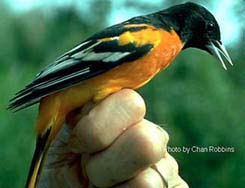 | The Baltimore Oriole has been the State Bird since 1947. Special provisions have been made for its protection. The Oriole's feathers are black and gold, the same colors as in the Calvert family shield. |
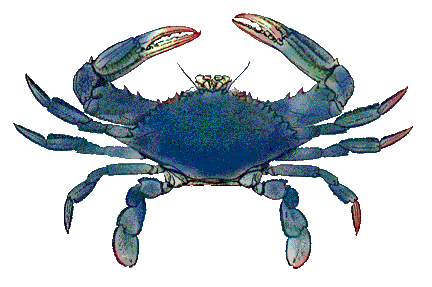 | In 1989 the Maryland Blue Crab was designated the State Crustacean. |
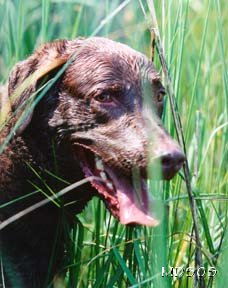 | In 1964, the Chesapeake Bay Retriever, named after the famous bay region of the breed's origin, was declared the official dog of Maryland. A working dog bred to recover waterfowl for hunters, the Chesapeake Bay Retriever is one of only a few breeds actually developed in the United States. Retrievers excel in field and obedience trials. These dogs are known for their versatility, strength, endurance, and devotion. |
 | The Black Eyed Susan has been the official Maryland flower since 1918. A yellow daisy or cornflower, it blooms in late summer. |
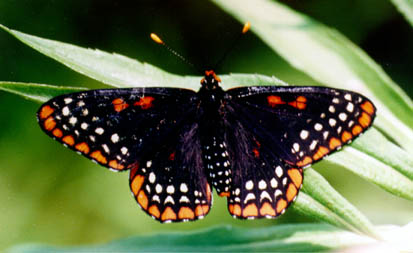 | The Baltimore Checkerspot Butterfly was designated Maryland's State Insect in 1973. The Baltimore Checkerspot is one of the most beautiful butterflies of our area, but not many people have seen it. The butterfly's wet-meadow habitat is quickly disappearing. |
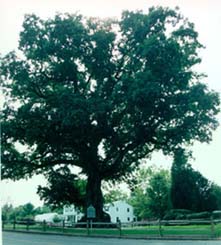 | Maryland's State Tree is the White Oak. It was symbolized by the Wye Oak that stood at Wye Mills on Maryland's Eastern Shore. It was more than 100 feet high, had a branch spread of 165 feet and a circumference of 31 feet, 10 inches. It was one of the largest in the world. On June 7, 2002, it was felled by powerful thunderstorms that also downed power lines throughout the area. |
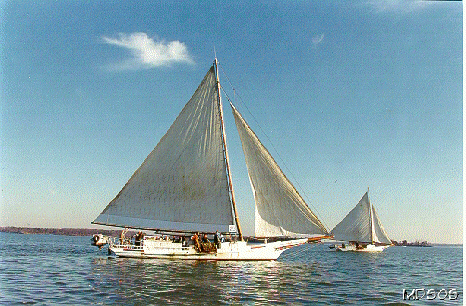 | The Skipjack was named the State Boat in 1985. Skipjacks (named after leaping fish) are the last working boats under sail in the United States. In winter, they dredge (scrape) oysters from the floor of the Chesapeake Bay. |
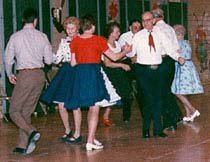 | In 1994, Square Dancing was designated the State Folk Dance. This dance form grew from dances of various cultures: the Morris and Maypole dances of England, ballroom dances of France, Church dances of Spain, and folk dances of Australia, Ireland, Italy, Germany, Mexico, Poland, Russia, and other nations. Square Dancing has been a popular folk tradition since 1651. |
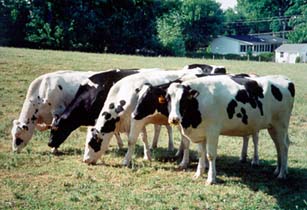 | Got Milk? Milk officially became the State drink on October 1, 1998. Found primarily in Frederick and Washington counties, most Maryland milk cows are Holsteins and can be recognized by their large black and white spots. Daily, a single cow can produce up to 8 gallons of milk, consume about 80 pounds of feed, and drink 30 to 40 gallons of water. |
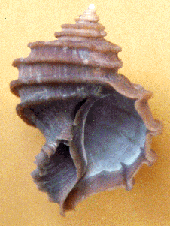 | In 1984 the shell of the Ecphora gardnerae gardnerae, an extinct snail, was named the State fossil shell. The Ecphora inhabited the Chesapeake Bay 5 to 12 million years ago. An Ecphora shell found in St. Mary's County about 1685 was one of the first North American fossils illustrated in European scientific works. |
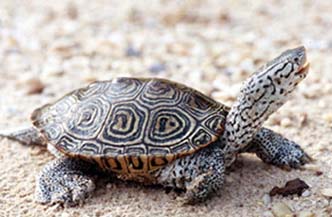 | The Diamondback Terrapin ( Malaclemys terrapin ) is the State reptile and official mascot of the University of Maryland College Park. It was named the State Reptile in 1994. This attractive turtle has diamond-shaped, concentric rings on its upper shell. |
 | In 1978, Center Stage was named the State Theater of Maryland. It is a resident professional theater. (Resident theaters invite artists to perform or design costumes and sets for their productions while living in theater-provided housing while they are working there.) Located in downtown Baltimore, Center Stage was founded in 1963. In 1974, a huge fire destroyed the original theater. After the destruction, Center Stage rebounded by buying and partially renovating an old building which was once part of Loyola College and the theater reopened its regular season in 1975. |
 | On October 1, 2001 the Calico cat was chosen as Maryland's State Cat because of the colors. They are the colors of Maryland's flag and founding families--red, black and white. |
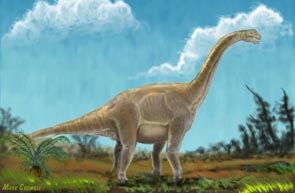 | Astrodon johnstoni officially became the State dinosaur on October 1, 1998. It lived during the early Cretaceous period, between 130 million and 95 million years ago, and was the first identified dinosaur in Maryland. It was one of the earliest dinosaur finds in the United States and the first sauropod described in North America. |
 | The rockfish (Morone saxatilis) was named the official fish of the State of Maryland in 1965. Originally called Roccus saxatilis, scientists corrected the genus designation in the late 1960s. The rockfish is considered to be the most valuable fish in Maryland waters. |
 | On October 1, 2003, the Thoroughbred Horse became the State Horse of Maryland. The average Thoroughbred stands 16 hands (64") high at the withers, and weighs 1,000 pounds. Its coat colors may be bay, dark bay, chestnut, black, gray, or occasionally roan. |
 | In 1962, a law was enacted making jousting our State sport. Jousters compete by trying to catch a hanging ring on a lance while riding a horse. |
 | In 2004, Lacrosse was officially named the Team Sport of Maryland. Lacrosse is the oldest sport in North America dating back to the 17th century.
Picture courtesy of 2002 U.S. Naval Academy woman's lacrosse team |
 | The Olney Theatre opened in 1941 and became the State Summer Theater of Maryland in 1978. It is located in Montgomery County, 12 miles from Washington, DC and 35 miles from Baltimore. The Olney Theatre puts on plays year-round. It also hosts several community projects. |
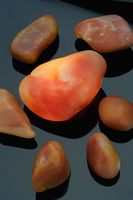 | Effective October 1, 2004, the
Patuxent River Stone became the State Gem of Maryland.
The Patuxent River Stone is actually an agate, a cryptocrystalline form of quartz. Found only in Maryland, the Patuxent River Stone's colors of red and yellow reflect the Maryland State Flag. |
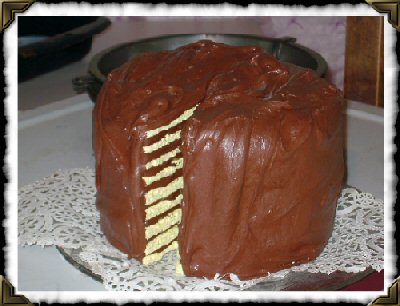
photo courtesy of smithisland.org | On April 24, 2008 Smith Island cake was designated as the official dessert of the state of Maryland which took effect October 1, 2008.
Smith Island Cake is a confection that consists of many (usually eight to ten) pancake thin layers of cake separated by an equal number of layers of icing, creme, frosting and/or crushed candy bars. The most common flavor is yellow cake and is iced with cooked chocolate icing. However, many variations have evolved, both in the flavors for frosting and the cake itself. Smith Island Cake originated from Smith Island, Somerset County, Maryland. |

photo courtesy of ABC2News | Walking became the State Exercise of Maryland on October 1, 2008. Maryland holds the honors as first state in the nation to designate a state exercise. |
